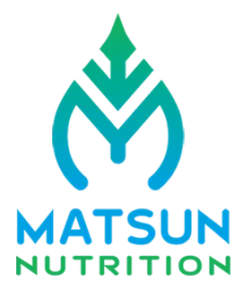
Pricing your supplement products is one of the most critical decisions for your business. The right pricing strategy ensures profitability, supports your brand image, and builds long-term customer loyalty. On the other hand, pricing too high can drive potential buyers away, while pricing too low can cut into your margins and make your brand appear “cheap.”
In this guide, we’ll cover the key factors, proven strategies, and modern trends that supplement brands use to set prices competitively—while still maintaining healthy profits.
Why Pricing Matters in the Supplement Industry
The supplement market is highly competitive and continues to grow year after year. With so many brands offering similar products, pricing isn’t just about covering costs—it’s about how your audience perceives your brand.
-
Customer Loyalty: Competitive pricing encourages repeat purchases.
-
Brand Positioning: Price impacts whether customers see you as premium, affordable, or budget.
-
Profitability: Correct margins allow your business to scale and reinvest in growth.
1st Step: Calculate Your True Costs
Before setting a price, you need to understand your total expenses. Beyond the cost of raw materials and manufacturing, factor in:
-
Packaging and labeling
-
Compliance and testing
-
Shipping and logistics
-
Marketing and advertising
-
Warehousing or fulfillment center costs
A good rule of thumb: Set your price to cover all costs and still leave room for a profit margin of 40–60%.
2nd Step: Research Competitor Pricing
Your customers are already comparing brands. If you’re priced far below competitors, it may signal poor quality. If you’re priced too high, you risk being overlooked.
How to approach competitor pricing:
-
Map the market range (low-end, mid-range, premium).
-
Identify your target segment (budget buyers vs. health-conscious premium buyers).
-
Decide your position (are you competing on price, value, or brand authority?).
Remember: competing solely on being the “cheapest” is rarely sustainable in supplements. Instead, position your pricing to reflect value + quality.
3rd Step:Choose a Pricing Strategy
Here are some popular pricing models used in the supplement industry:
-
Cost-Plus Pricing – Add a fixed margin on top of your costs. Simple, but doesn’t factor in customer perception.
-
Competitive Pricing – Match or slightly undercut competitor prices while differentiating with value.
-
Premium Pricing – Charge higher to reinforce exclusivity, quality, or brand trust.
-
Psychological Pricing – Use strategies like $39.99 instead of $40 to increase conversions.
-
Bundle Pricing – Offer “Buy 2, Get 1 Free” or product kits to increase average order value (AOV).
-
Subscription Pricing – Provide discounts for recurring deliveries to encourage long-term customer retention.
4th Step: Factor in Customer Loyalty
According to recent studies, repeat customers spend 67% more than new ones. Your pricing strategy should encourage loyalty through:
-
Rewards programs for repeat buyers
-
Bundle discounts on multiple bottles
-
Subscribe & Save options that lock in recurring revenue
5th Step: Adapt to Market Trends
The supplement industry is shifting rapidly, and your pricing should keep pace. Current trends include:
-
Transparency in pricing – Customers value seeing exactly what goes into a product and why it costs what it does.
-
Sustainable packaging costs – Eco-friendly packaging may justify slightly higher pricing.
-
DTC (Direct-to-Consumer) models – Brands bypass retailers, offering better value directly.
-
Global shipping considerations – Pricing may differ if targeting international customers.
Example: Pricing a Protein Powder
Let’s say your total cost per unit = $10.
-
Competitors are selling between $29.99–$39.99.
-
You decide to position as premium, science-backed.
Your final price: $34.99 per unit
-
Covers costs
-
Fits the competitive range
-
Leaves room for discounts, bundles, or promotions
Also Read, Matsun Nutrition Low MOQs Supplement Manufacturing Services.
Final Thoughts
Pricing your supplement products is more than a math equation—it’s a mix of costs, competition, branding, and customer psychology. By combining smart cost analysis with strategic positioning, you can set prices that both attract buyers and grow profits.
If you’re ready to launch your supplement line with a competitive edge, Matsun Nutrition can help with low-MOQ manufacturing, wholesale pricing guidance, and private label solutions.
Get a Quote from Matsun Nutrition Today
Frequently Asked Questions (FAQs)
What profit margin should I aim for in supplement pricing?
Most supplement brands target a 40–60% profit margin to stay competitive while covering costs.
How do I compete with big supplement brands on pricing?
Instead of undercutting prices, focus on niche marketing, quality, and transparency. Smaller brands can win with trust and personalized service.
Should I use discounts or bundles when pricing supplements?
Yes—bundles, BOGO deals, and subscriptions can boost your average order value without lowering your brand’s perceived worth.
What is psychological pricing, and does it work for supplements?
Yes. Listing a price as $39.99 instead of $40 often increases conversions because customers perceive it as cheaper.
How often should I review my pricing strategy?
At least every 6–12 months, or whenever manufacturing, shipping, or competitor costs change significantly.
Can sustainable packaging justify higher supplement prices?
Yes. Many consumers are willing to pay more for eco-friendly and sustainable packaging.
What’s the biggest mistake new supplement companies make with pricing?
Setting prices too low. It reduces margins, hurts perceived quality, and makes it harder to raise prices later.




